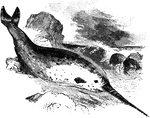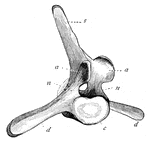Clipart tagged: ‘Whale’

Dugong
"In its habits resembles the manatees, but it exceeds them in size, full grown individuals measuring…
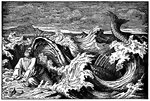
Jonah is Swallowed by a Great Fish Sent by God
"And Jehovah prepared a great fish to swallow up Jonah; and Jonah was in the belly of the fish three…

Whale
"Whale is a name that may be taken as equivalent to Cetacean, and applied to any member of that order…

Whale
The common name of animals belonging to the order cetacea, with which are included the porpoise and…


